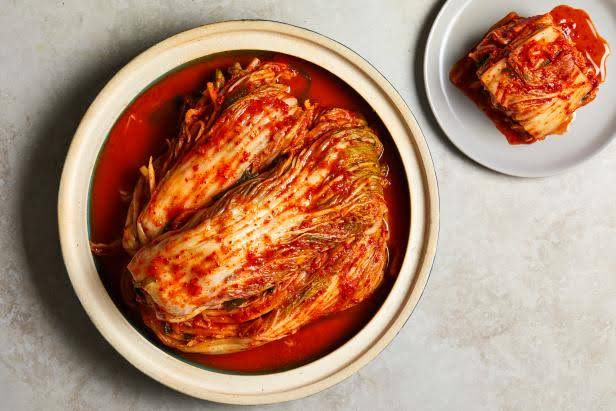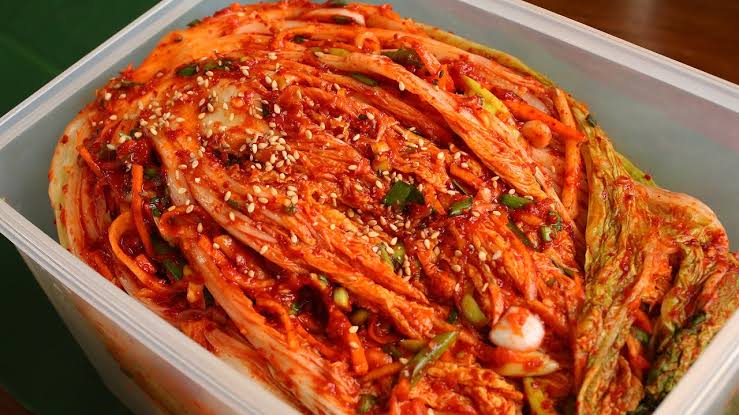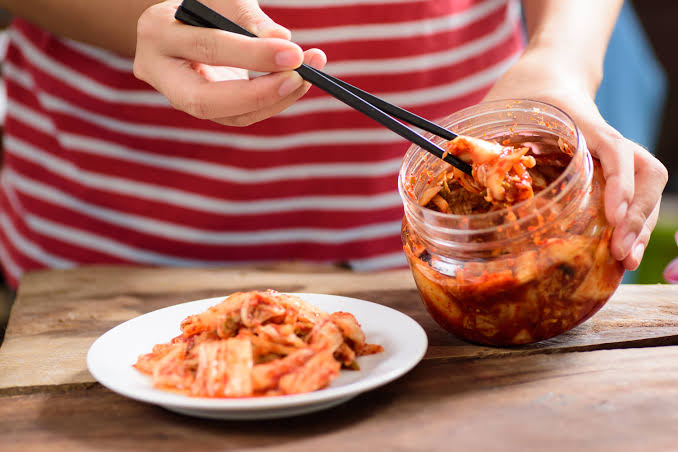A professional with 5 years of experience in the food industry can confidently say that Korean cuisine is one of the most exciting and flavorful cuisines out there. And at the heart of Korean cuisine is Kimchi. In this article, I’ll share some rare information and recommendations on how to bring Korean cuisine to your table with this delicious dish.
First, let’s talk about the history of Kimchi. It has been a staple in Korean cuisine for over a thousand years. It was originally created as a way to preserve vegetables during the winter months, and it quickly became a beloved dish in Korean culture. Today, there are over 200 different types of Kimchi, each with its own unique flavor profile.

One of the things that makes this dish so special is its fermentation process. Traditional Korean Kimchi is made by using natural fermentation methods, which involves salting the vegetables and allowing them to ferment for several days or weeks. During this time, naturally occurring bacteria break down the sugars in the vegetables, creating lactic acid and giving it its tangy and complex flavor.
But fermentation isn’t just important for flavor – it’s also essential for the health benefits of Kimchi. It is packed with probiotics, which are beneficial bacteria that promote gut health. Eating Kimchi regularly can help improve digestion, boost the immune system, and even reduce inflammation in the body.
Bringing Delicious Korean Cuisine to Your Table
Here are some recommendations on how you can bring Korean Cuisine to your table with delicious Kimchi:
- Look for authentic Kimchi: When shopping, look for brands that use traditional fermentation methods. Avoid brands that use shortcuts, such as adding vinegar or other acidifiers, as they can result in a less authentic flavor. And if you’re feeling adventurous, try making your own Kimchi at home using a traditional recipe.
- Experiment with different types of Kimchi: There are over 200 different types of this Korean dish. Amazing right? And each with its own unique flavor profile. Try different types to discover your favorites and experiment with using them in different dishes.

- Use Kimchi in a variety of dishes: You can use this special ingredient in quite a number of dishes. Ranging from classic stews and soups to modern fusion dishes. Its bold and spicy flavor makes it a great addition to stir-fries, rice bowls, and even tacos.
- Pair Kimchi with complementary flavors: This dish pairs well with a variety of flavors, including sweet, salty, and sour. Try pairing it with ingredients like soy sauce, sesame oil, or honey. This will create a flavor balance that is both bold and nuanced.
- Don’t be afraid to get creative: Kimchi is a versatile ingredient which you can use in a variety of ways. Don’t be afraid to get creative and try using it n unexpected ways. You can do so in grilled cheese sandwiches or as a topping for pizza.
Mistakes to Avoid While Making Kimchi
- Making Kimchi at home can be a fun and rewarding experience. However, there are some common mistakes that can affect the flavor and quality of the finished product. Here are some mistakes to avoid when making at home:
- Not using enough salt: Salt is essential for the fermentation process. It draws out excess water from the vegetables and helps to create a brine. If you don’t use enough salt, the Kimchi may not ferment properly. This can result in a less authentic flavor and texture.
- Not fermenting for long enough: Kimchi needs time to ferment properly. The length of time required will depend on the temperature and humidity of your environment. If you don’t ferment the Kimchi for long enough, it may not develop the tangy and complex flavor. As you know, that is characteristic of this traditional Korean dish.
- Using the wrong type of cabbage: The type of cabbage you use can affect the texture and flavor of the finished Kimchi. Napa cabbage is used to make this dish. It has a sweeter and more delicate flavor than other types of cabbage. Using a different type of cabbage may result in a less authentic flavor and texture.

- Adding too many or too few seasonings: Kimchi is made with a variety of seasonings, including chili flakes, garlic, ginger, and fish sauce. Adding too many or too few seasonings can affect the flavor balance of the finished Kimchi. It’s important to follow a recipe and measure out the seasonings carefully to ensure a well-balanced flavor.
- Not using clean utensils and containers: The fermentation process relies on the growth of beneficial bacteria. Nevertheless, it’s important to keep everything clean to avoid the growth of harmful bacteria. Make sure to use clean utensils and containers when making Kimchi. void using wooden utensils, as they can absorb bacteria and affect the fermentation process.
By avoiding these common mistakes, you can ensure that your homemade Kimchi turns out delicious and authentic. Making this dish is a fun and experimental process. So, don’t be afraid to try new things and adjust the recipe to your liking.

So you see, Kimchi is a delicious and nutritious ingredient that is a must-try for anyone who loves good food. By following these recommendations and experimenting with different types of Kimchi, you can bring the bold and savory flavors of Korean cuisine to your table. So why not add some excitement to your meals with delicious Kimchi?


